It Tasted Like Seawater
We were warned it might happen.
I honestly thought they wouldn’t dare.
But the China Coast Guard did.
And it tasted like seawater.
The day started out like any other normal trip to Bajo de Masinloc—also known as Scarborough Shoal or Panatag Shoal. Eighty kilometers off, we started to see the now-familiar shape and silhouette of a China Coast Guard (CCG) ship.
One became two, then three.
A gray ship appeared a bit farther away, obviously trying to keep its distance. It was a ship from the People’s Liberation Army Navy—a military vessel amongst the civilian vessels in the area.
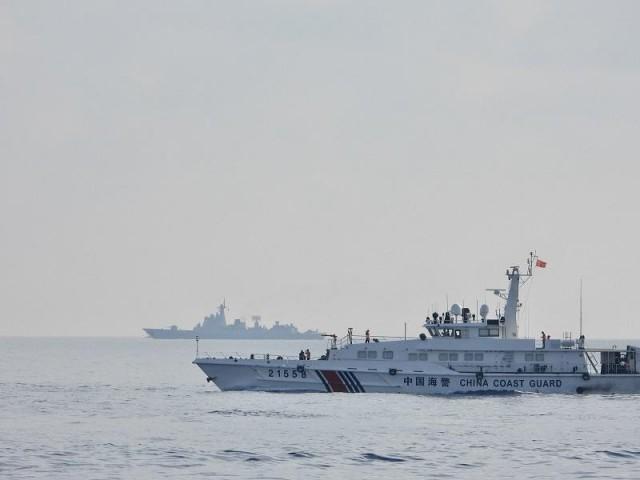
And then the chase began.
The Bureau of Fisheries and Aquatic Resources (BFAR) ship BRP Datu Bankaw veered to the right. Our ship, the BRP Bagacay of the Philippine Coast Guard (PCG), stayed on course.
A huge CCG ship maneuvered and boxed in the smaller BFAR ship towards another CCG vessel.
A third, smaller CCG ship positioned itself between us and the Datu Bankaw.
For the next several minutes, this was how we sailed towards our objective.
And then we lost sight of the BFAR ship.
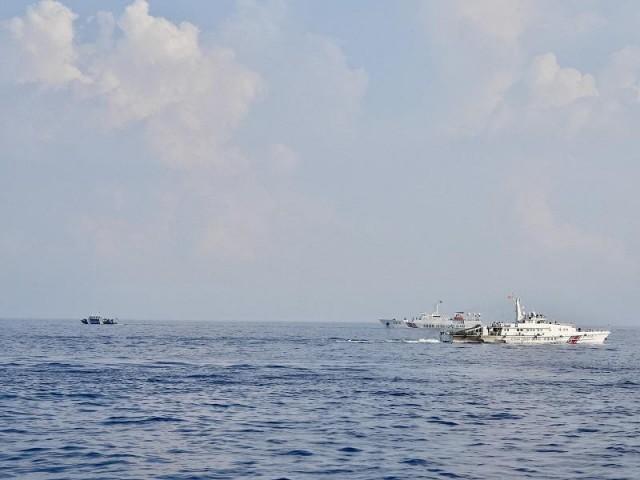
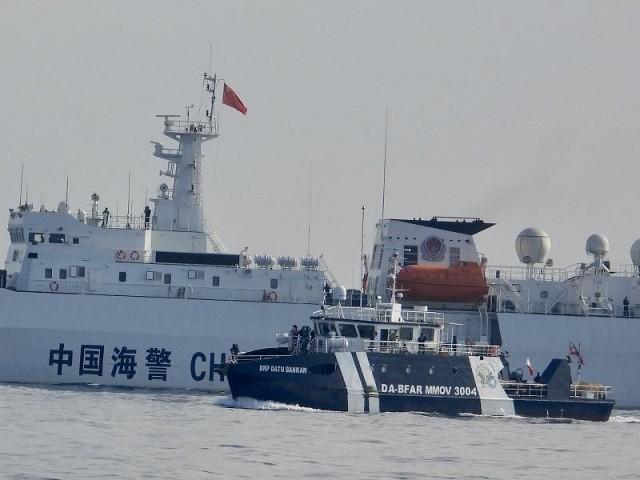
Our ship meanwhile tried to outrun the CCG ship shadowing us, the personnel of both vessels eyeing each other, taking each others’ pictures and video.
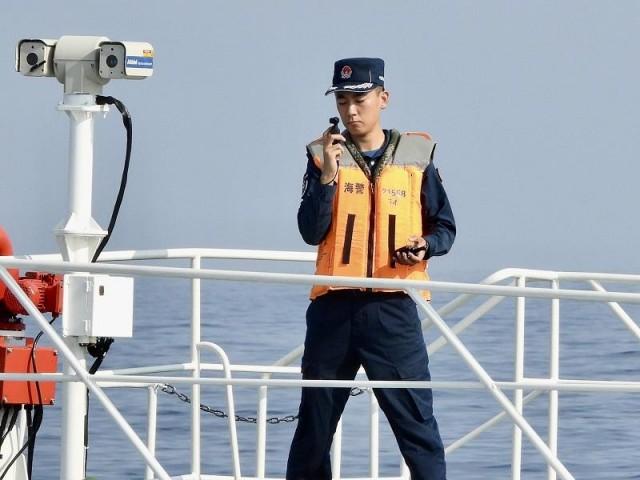
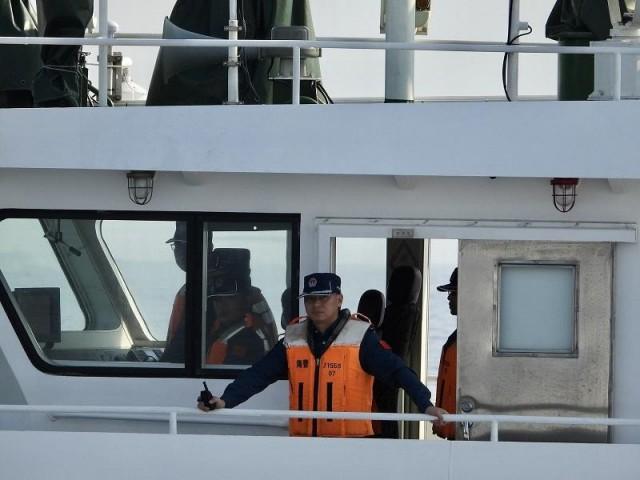
At one point, the Bagacay made a hard turn on its port side. The Chinese vessel tired to follow but was unable to.
The captain made a big circle and continued towards Bajo de Masinloc. The smallest among the Chinese ships was eventually able to catch up, sailing so close that the wakes of both boats were almost touching each other…
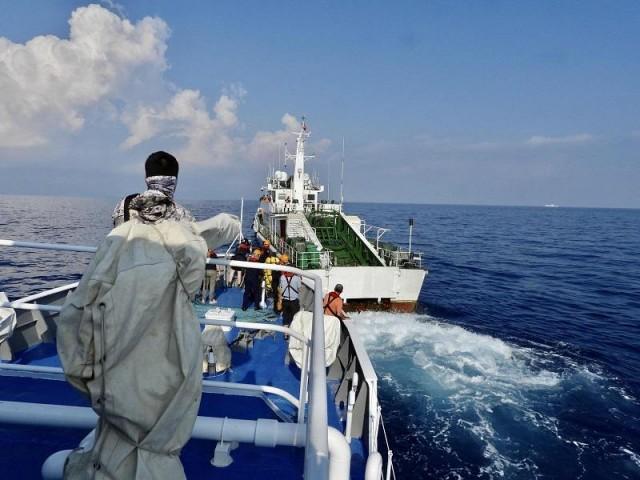
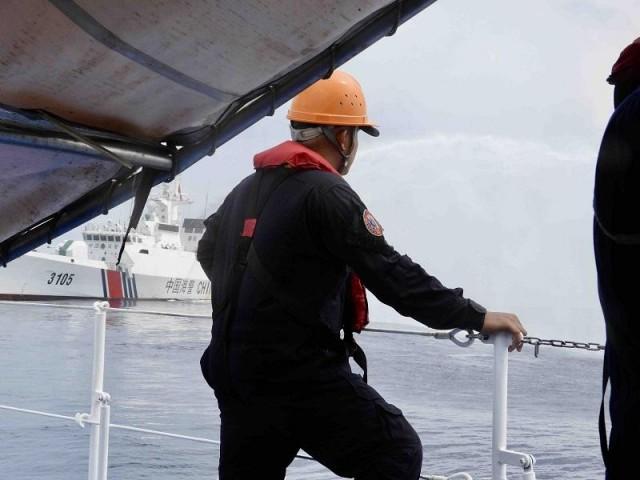
The boats were so close, we could see their facial expressions, and they could see ours.
Only our Coast Guard personnel were smiling.
The journalists aboard the ship were smiling too. Now we have one part of the visual to our story.
It was supposed to be a simple one. Observe and document the resupply mission of BFAR and the Philippine Coast Guard. How would the Chinese react?
We would later find out.
After outmaneuvering the CCG ship shadowing us, the Bagacay reached the entrance of the shoal unhampered.
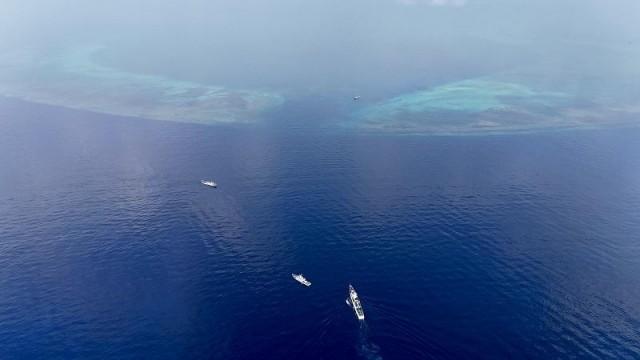
Surprised we were just 600 yards from the mouth of the shoal closely guarded by the Chinese, I immediately launched my drone.
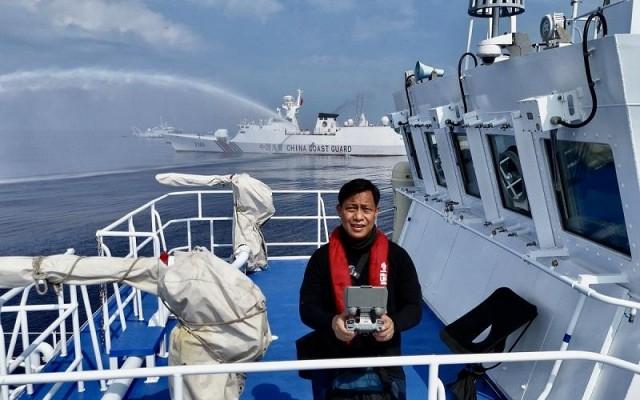
A mere three minutes into the flight, I saw a huge white ship approaching our vessel on my screen monitor, its water cannon turned on.
PCG personnel started calling out to the journalists to get inside.
I couldn’t. My drone was 300 meters above us.
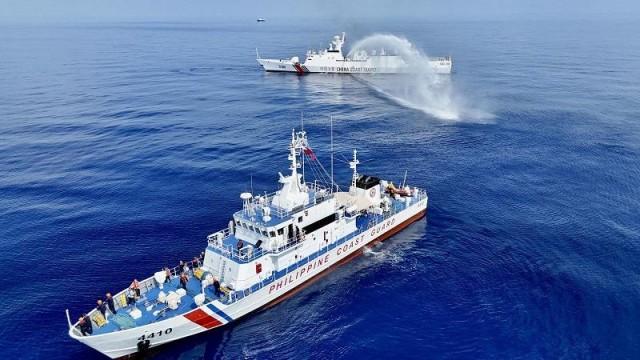
I was still joking with the PCG personnel if what the Chinese were doing was just a warning for us not to go any farther, or perhaps a water salute for our captain for having dodged the Chinese ships.
My answer came when I saw on my monitor that the back of our ship was hit, people scrambling for cover.
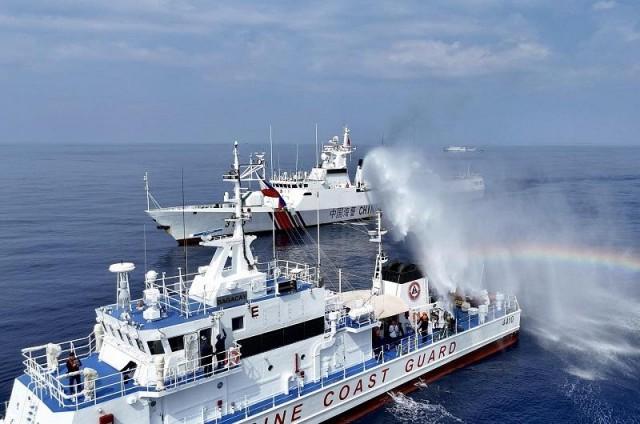
It only took seconds for the water to reach the front of the ship where I was. My screen monitor immediately got drenched.
Now, I have to visually fly the drone.
Seeking cover on the front of the bridge, I tried to visualize where the drone might be and how to get the drone back.
A split-second opportunity came when the water cannon again turned towards the back of the BRP Bagacay.
I flew the drone down, caught it and promptly did a piece on cam. These things don’t usually happen.
I was immediately ushered inside the bridge. Seconds after shutting the door closed, a water cannon from a second CCG ship started hitting the door.
BRP Bagacay sustained damage on its left side, the railings crumpling and damaging the LED character display of the ship. The Canopy at the back of the ship likewise sustained heavy damage. pic.twitter.com/GqfxS5K7BO
— Raffy Tima (@raffytima) April 30, 2024
On the bridge, that was when I realized: the water that hit me tasted like seawater.
The Bagacay was hit three more times after the initial assault.
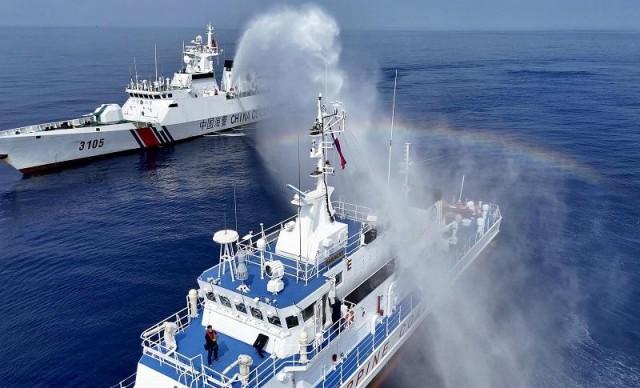
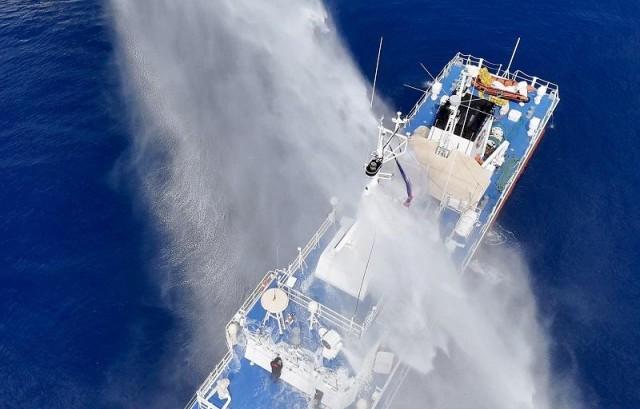
The Datu Bankaw was hit ten times, damaging its radar and some of its electronic equipment.
Six hours after the initial hit, our boat rendezvoused with the BFAR ship and started to slowly head away from the shoal.
Despite sustaining damage, both ships stopped 80 kilometers from the shoal, the same area where the Chinese Coast Guard ships intercepted us en route to Bajo de Masinloc.
That’s where the fishermen started to congregate.
And the mission continued, distributing free fuel for the fishermen's mother boats, the water cannon incident just another reminder that a new normal is dawning in this part of the West Philippine Sea.
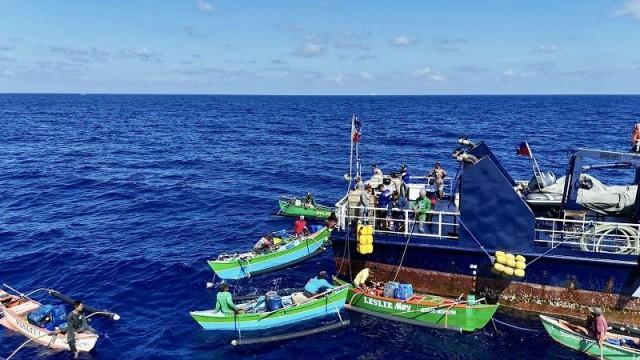
The BFAR ship distributed its fuel and supplies to the fishermen, with a US P-3 Orion aircraft circling ahead and the Chinese Coast Guard not far away, all observing each other as the sun slowly set and the half-moon started to rise.

For the Filipino fishermen patiently waiting their turn to get fuel for their small bobbing boats, they couldn’t care less what happened that day.
Tomorrow, they might be in the cross-hairs of the water cannon.
But today, they have a free fuel to collect. Tomorrow is another day.
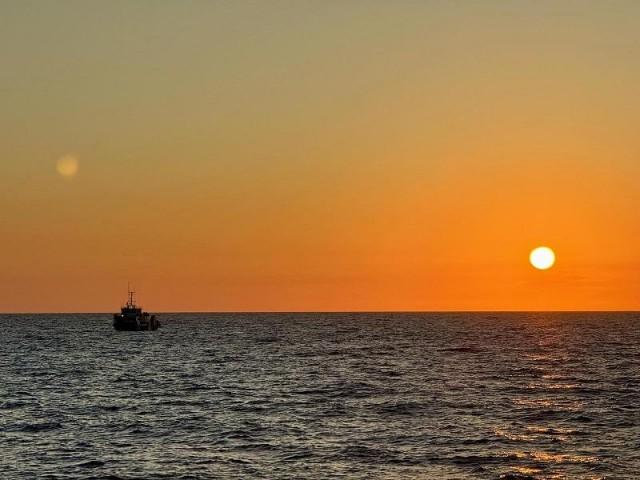
— BM, GMA Integrated News




